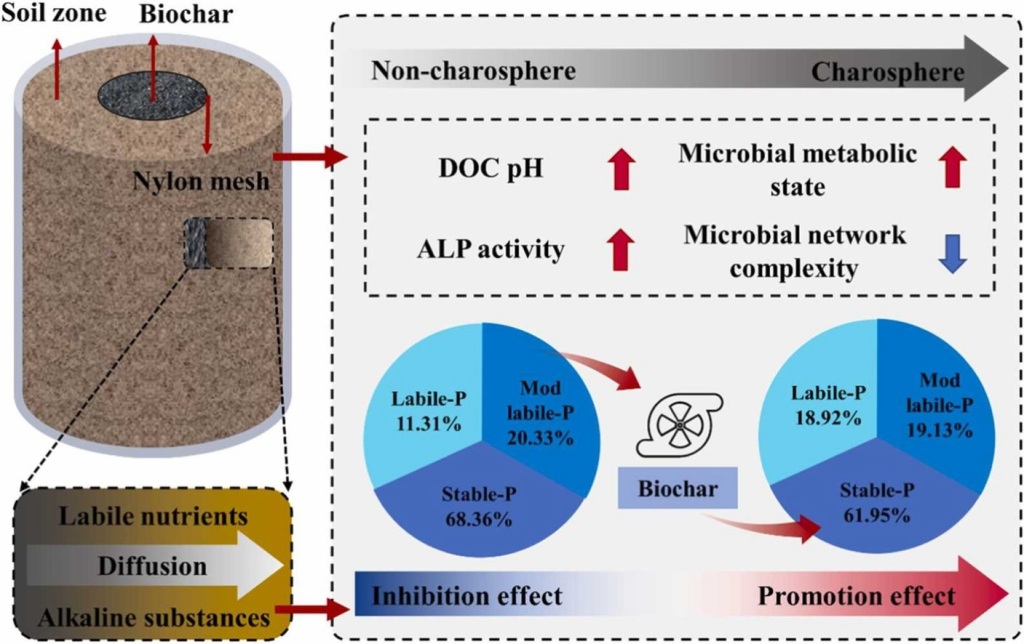
Biochar, widely used to enhance soil phosphorus content, creates a unique ecological zone called the “charosphere” where it contacts soil. This charosphere exhibits distinct physical and chemical properties compared to the surrounding soil, leading to varied effects on the phosphorus cycle. Researchers designed a barrier device to separate biochar from soil, analyzing biochar’s influence on soil nutrient content and microbial activity.
Key findings show biochar significantly boosts soil microbial activity, enhancing nutrient recycling. Specifically, the labile phosphorus fraction was 67.28% higher in the charosphere than in non-charosphere soil. The study highlighted the pivotal role of phoD-harboring bacteria in phosphorus activation. These bacteria’s alpha diversity and nutrient transfer efficiency were greater in the charosphere, while the non-charosphere exhibited a more complex bacterial co-occurrence network. Additionally, fungal community interactions in the charosphere were stronger than those in bacterial communities.
Biochar’s ability to increase dissolved organic carbon (DOC) and soil pH was crucial for enhancing phosphorus availability. The findings suggest that biochar activates soil phosphorus by stimulating microbial activity, driven largely by the phoD-harboring bacterial community. This research offers new insights into biochar’s role in regulating soil phosphorus cycling, providing valuable guidance for its application in sustainable agriculture.






Leave a comment